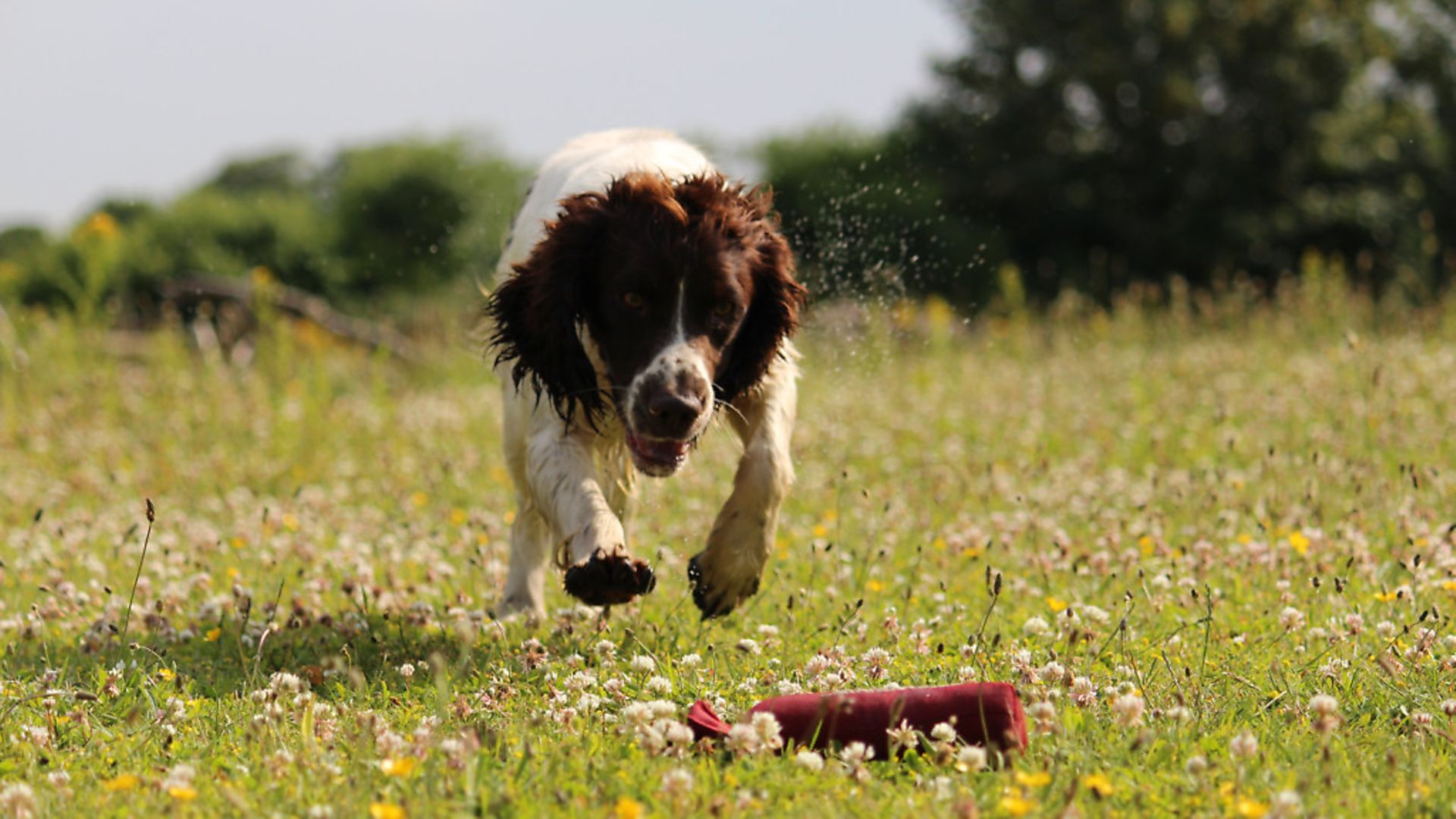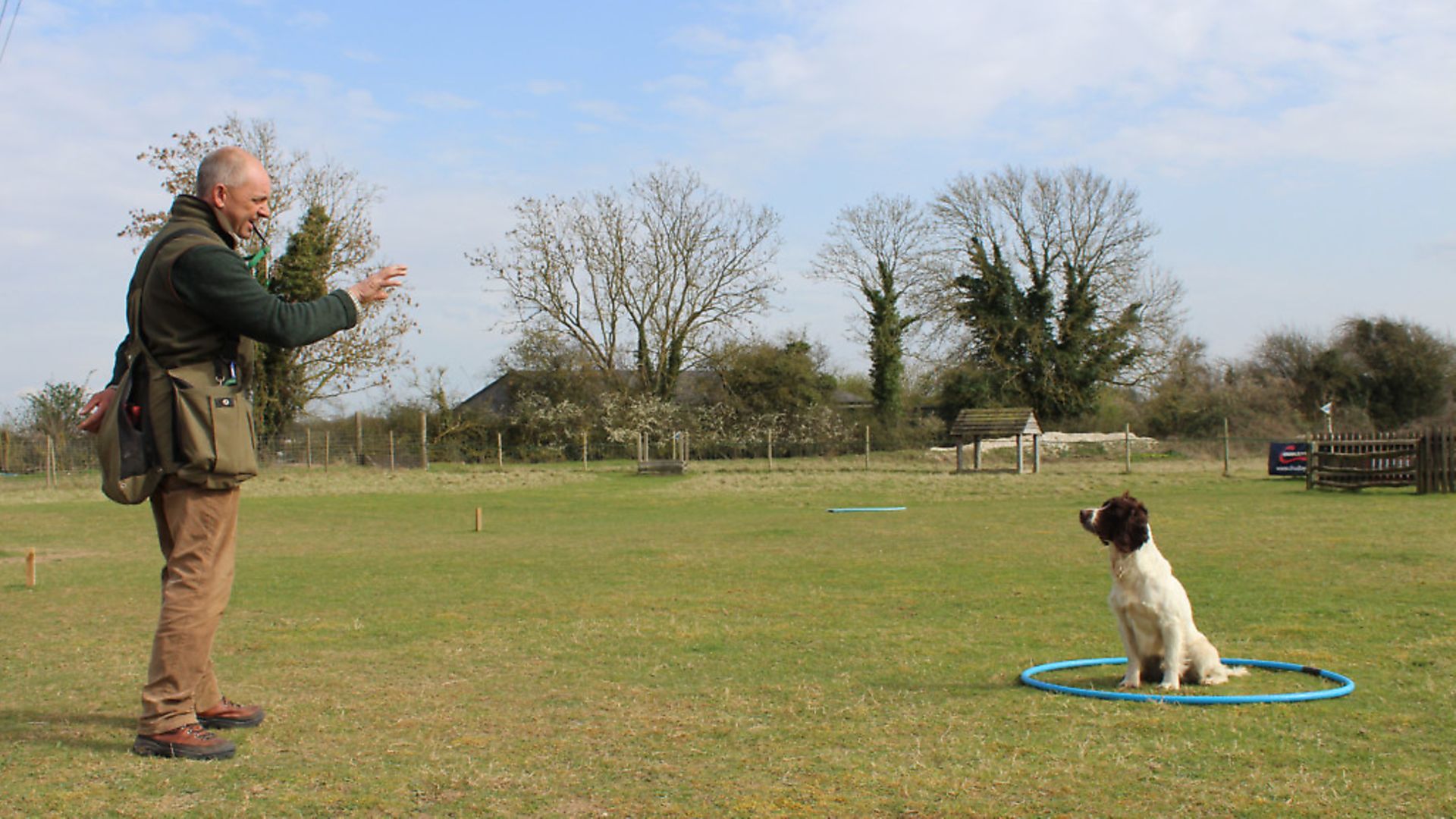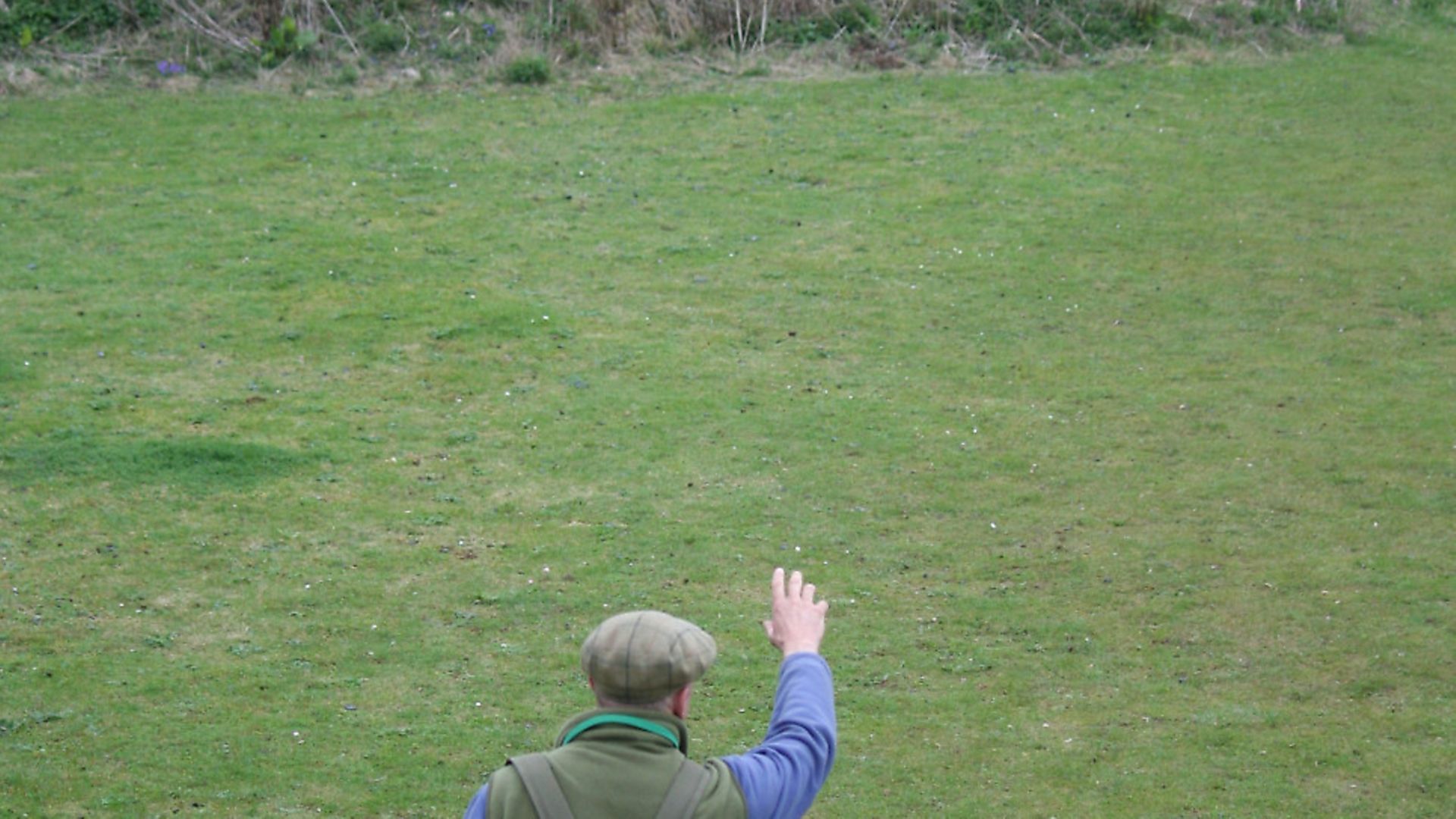What are the basic training commands that all gundogs need in order to be successful in the field? Howard Kirby gives advice on how to perfect the important ones!
 credit: Archant
credit: Archant
Gundog training is a thriving, forward-thinking and evolving sport. It’s highly competitive and as trainers we all want to be the best we can be. This article is all about encouraging you to aim high. It’s really important when training a dog that you go all out to ensure that you learn to do everything properly. If, through a lack of understanding, you do things that confuse your dog, the partnership that you are looking to achieve is likely to underperform.
Here at Mullenscote, we regularly sit down as a team and review what we see in the training field. Our role is to train trainers to school their dogs, so we need to pay particular attention to the actions of the handlers as well as the dogs, the two being intrinsically linked. In early training, the handler is the most influential element of the partnership. If things don’t go well, it’s not uncommon for the dog’s behaviour to take over and start to have a significant influence on the direction of training. Doing our upmost to teach handlers how to encourage desirable behaviour and how to avoid things that will be problematic is an essential part of our role. The problem for first-time dog owners is that you need to have a thorough understanding of the way your dog thinks, learns and functions from the outset.
It’s not uncommon to hear people say, “ohh, every one messes up their first dog”. While this statement is often said tongue in cheek, there are far too many dogs (not just gundogs) that have been really messed up by well-meaning owners. Imagine what happens to the poor dogs that end up in the hands of less kind owners. Please don’t misunderstand me, I certainly don’t think that I fully understand dogs and have never made mistakes. In fact, it’s the constant learning process that makes dog training so exciting.
A common training problem is that of getting handlers to set themselves standards and to adhere to them. Sometimes it’s laziness, but more often than not it’s just that the handler isn’t aware that they are not focusing on the fine detail and not really achieving standards that will be essential to produce a well-trained gundog. So! What I’m going to do is to make a list of the behaviours we need to teach our dogs. The list will start at the beginning and then layer up in progressive order. I always like to assume that you are doing your upmost to see yourself and behave like an apex predator. The way you conduct yourself, the instructions, rewards and occasional corrections that you offer your dog must be clear and, most importantly, make sense to the dog.
Don’t forget that the best hunting partnerships are formed when a dog understands that its master will help it to get prey in its mouth. This advanced partnership will see a dog choosing to take instruction from its handler willingly.
COME SIT AND WATCH
From the outset, we need to teach our puppies to come, sit and watch us. These behaviours are best taught using a target system, such as a place board or hoop. It’s essential that we establish these behaviours correctly; we need the dog to respond instantly to the recall and to come sit and look up at us. The dog should be sat between your feet looking straight up at you and maintaining eye contact; slowly but surely teach the dog to hold this position, maintaining eye contact for longer and longer periods of time.
It’s not uncommon for novice handlers to inadvertently allow the dog to take a reward and leave this position. We want the dog to learn to sit and stay maintaining a focus for as long as possible. Use regular rewards to teach the puppy to stay focused, and slowly reduce the frequency of rewards as the puppy’s focus grows.
 credit: Archant
credit: Archant
THE SIT AND STAY
Teaching a youngster the Sit and Stay is basically an extension of the Sit and Watch. Slowly but surely, take gentle steps backwards away from the puppy, returning quickly to reward. It’s essential at this early stage that you progress slowly, as our aim is to teach the puppy to stay exactly where he is. He needs to learn that he must not leave the Sit position.
We are trying to avoid the need for correction. If you rush the puppy at this early stage, he will inevitably leave the target area. If you persist in doing this, you will create a problem that needs correction to resolve it. As the puppy gains in confidence and steadiness, you can move further away and start to move around the pup. Eventually, we will need to train the dog to sit and stay while there are a number of very high level distractions happening around it – there’s nowhere tougher than the shooting field. We can start to drop dummies as distractions and use tennis balls to create movement.
I would recommend the use of food rewards to keep this element of training interesting for the puppy. Once we start to throw dummies and tennis balls around the dog, we can, of course, send the dog for a retrieve as a reward for his steadiness.
There are always differences of opinions when training dogs, but I am quite happy, delighted in fact, when a little dog spins on its bottom to follow you around when left on the Sit Stay, as it means that it’s staying in contact and interested in what you are doing.
The purpose of the Sit Stay is to encourage calm, focused steadiness, meaning the dog stays exactly where it is and chooses not to move. We need to be very clear in our minds that we are looking to produce a dog which sits steady in the shooting field. If we do not teach this behaviour thoroughly and accurately at foundation level, it will inevitably lead to issues later.
 credit: Archant
credit: Archant
THE RECALL
Our dogs need to be instantly responsive to whistle and verbal commands. I regularly see handlers that have resorted to issuing multiple verbal or whistle commands to get their dog to come to them. Clearly, we need to change this.
Novice handlers sometimes blur the lines between formal training and general exercise. If you choose to accept poor levels of obedience when exercising or walking, then you will have problems in the training and shooting field. We need first to teach, then insist on absolute obedience in all of our interactions with our dogs.
When training a young dog, ensure you choose your moment wisely. Choose to recall at a point in time when you are sure the dog will react to your recall command. Recalling your dog when he is most unlikely to respond will inevitably lead to disobedience in general.
Key to this exercise is that you manage the dog’s environment so that you are able to choose when and when not to give commands.
Practise the recall command either verbally or on the whistle while the dog is close to you; your physical presence and energy are likely to produce a much greater response. In the event that the dog chooses to disobey your recall, you are now in a strong position to vocalise your disapproval and move towards the dog. If you have established a clear and concise line of communication with the dog, it will be left in no doubt that you are unhappy with its lack of response. Immediately after correction, you should ensure that it is quickly followed up with gentle but clear instruction. If you have done this correctly, in this instance, the dog will now be moving toward you, so it is essential that you reward this desirable behaviour.
As we look to send the dog further and further away from us, either to hunt or retrieve, we will need to ensure that we do not allow obedience to slip. You will hear it said time and time again, but if basic obedience has been taught properly at close range, then the dog will choose to respond.
After having lifted a retrieve, don’t allow the dog to sniff, hunt or scent mark. Insist on a straight-line return. The dog should bring the dummy straight to you, delivering to hand. Don’t allow the dog to run past, run around, showboat or turn its back on you while delivering. Once the dummy has come to hand, insist the dog either sits or takes itself to the finish position at heel.
 credit: Archant
credit: Archant
THE STOP WHISTLE
With cooperation in mind, the dog must stop instantly to the first blow of our stop whistle. Anything less will not result in success. From tiny, teach a young puppy to stop instantly and accurately on a blow of a whistle. Again, the use of target training can assist in the accuracy and precision we require at this level. Food rewards or a retrieve are perfect for rewarding a dog for a prompt response.
Teaching your dog that he will receive a reward for sitting instantly to the whistle will always give you the best results. Training your dog to understand that something positive will happen if he stops when he hears the whistle will always help you in the shooting field. There will be occasions when a young dog chooses to disobey the Stop whistle. Once again, if you have schooled your dog properly to understand when you are cross with him, it will be straightforward to correct any form of disobedience.
SEND AWAY AND DIRECTIONAL COMMANDS
When sending our dogs for a retrieve, we want them to go in the direction we send them. It will require a lot of practice to teach our dogs to take a straight line and hold it as they run out away from us. This straight line will need to be a conditioned response. The use of marks, memories and blind retrieves along clearly marked pathways will help to build the dog’s confidence to take and hold the line. Clearly defined hunting areas and marker poles can assist in helping to build this confidence. Train for success, don’t let the dog fail.
If you regularly train alone, use the memory retrieve to a marker pole or clearly defined hunting area to ensure your dog gives power, pace, enthusiasm and confidence as he makes his out run. Once the dog is running with confidence to the hunting area, use a memory blind to make progress towards a full blind retrieve.
Do not underestimate how difficult it is to teach your dog to take a line on a blind retrieve. A combination of conditioning and confidence will be required for the dog to trust you when taking this line. Teaching a retriever to do this will require an enormous amount of time, patience and skill. Teaching one of the hunting breeds, for example spaniels or HPRs, will often be more difficult because of the dog’s natural desire and our training to teach the dog to hunt. Here at Mullenscote, we limit the amount of hunting that young dogs do and instead go to great lengths to ensure the dog has a good basic understanding as a retriever.
If you set up retrieves that are too difficult for the young dog, it will very quickly adopt the strategy of hunting big and wide to achieve its aim. This is a fault which we must not allow the dog to develop. We need to teach the dog to get to, and then hold, an area, working it with his nose until he is successful in finding the retrieve. Again, the use of a target hunting area or marker pole will encourage this behaviour. The dog’s long-term success is in your hands.
As said above, hard-hunting dogs, if unable to find a dummy, will cast wider and wider in their efforts to be successful, while less confident dogs will quickly lose enthusiasm and start to show a lack-lustre approach to retrieving. An early indication of this going wrong will be for you to see a dog run out to the fall, make a poor effort of hunting for the dummy and then quickly return to the handler. It’s really important that you recognise this and do everything possible to ensure the dog is successful in his retrieves.
Apply the same basic techniques to directional retrieves: left, right, backs and recall retrieves all require absolute trust and cooperation from the dog. Clearly, a full understanding of our commands and signals are required before the dog will offer you his trust and cooperation.
There is so much for us to learn if we are to be successful in training a dog. Work hard, do your homework and, if presented with an opportunity to work with someone at the top of their game, listen hard!